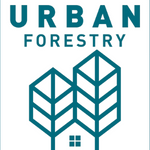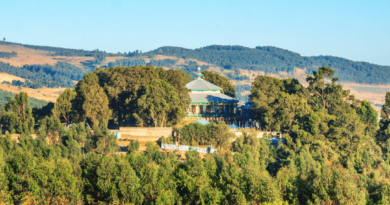Urban Tree Care And Maintenance
Urban trees play a vital role in providing shade, clean air, and aesthetic beauty to our cities. Proper care and maintenance are essential to ensure that these trees thrive and continue to benefit our communities for generations to come. In this chapter, we will discuss the importance of pruning, watering, and pest management in urban tree care and maintenance.
Pruning: Pruning is the process of removing dead, diseased, or damaged branches from a tree. This helps to promote healthy growth and prevent the spread of disease. Pruning should be done by a certified arborist, as improper pruning can cause serious damage to the tree. Trees should be pruned at the right time of year, depending on the species, to minimize stress on the tree.
Watering: Water is essential for the survival of trees, especially during periods of drought. In urban areas, trees often have to compete with other plants for water and may not receive enough from natural rainfall. It is important to provide trees with adequate water, especially during their first few years of growth. This can be done by watering the tree deeply and regularly, ensuring that the soil around the tree is moist but not waterlogged.
Pest Management: Urban trees are vulnerable to a variety of pests, including insects, fungi, and diseases. Regular inspections of the tree can help identify potential pest issues early on, allowing for prompt treatment. Chemical pesticides should be used only as a last resort, and only by a certified applicator. Biological controls, such as beneficial insects and microorganisms, can also be used to control pests in an environmentally friendly manner.
Kenya has a varied climate, with different regions experiencing different weather patterns. In general, the country has a tropical climate with high temperatures and high humidity. In urban areas, this can be especially challenging for trees, as they may not be able to adapt to harsh conditions. Here are a few special tips for urban tree care and maintenance in the Kenyan climate:
- Select tree species that are well-suited to the local climate. For example, species like the Neem tree (Azadirachta indica) or the Acacia tree (Acacia spp.) are known to be drought-tolerant and able to withstand high temperatures.
- Provide adequate water to trees, especially during dry periods. In urban areas, trees may not receive enough water from natural rainfall, so it is important to supplement them with irrigation. However, avoid over-watering as this can lead to waterlogging and root rot.
- Provide shade to young trees. In the Kenyan climate, young trees can be particularly vulnerable to sun damage. Placing trees in shaded areas or providing temporary shade with mesh or cloth can help protect them until they are established.
- Be aware of pests and diseases that may be prevalent in the Kenyan climate. For example, the Red Scale insect (Aonidiella aurantii) and the Mango fruit fly (Ceratitis cosyra) are known to infest fruit trees in the country. Regular inspections and prompt treatment can help prevent these pests from causing significant damage.
- Consult with a local arborist or horticulturist for guidance on tree selection, care, and maintenance in the Kenyan climate.
In conclusion, urban trees require proper care and maintenance to thrive. By following the guidelines discussed in this article, including regular pruning, watering, and pest management, we can ensure that our urban trees continue to provide the many benefits they bring to our communities.
References:
- “Tree Care: Pruning” by International Society of Arboriculture, https://www.isa-arbor.com/tree-care-maintenance/pruning
- “Urban Tree Watering” by USDA Forest Service, https://www.fs.fed.us/urban/publications/Urban-Tree-Watering.pdf
- “Biological Control of Pests in Urban Trees” by University of California Agriculture and Natural Resources, https://anrcatalog.ucanr.edu/pdf/8334.pdf
- “A guide to tree selection for urban planting” by Ministry of Environment, Kenya, http://www.environment.go.ke/wp-content/uploads/2016/07/A-Guide-to-Tree-Selection-for-Urban-Planting.pdf
- “Kenya: Tree planting campaign to combat desertification” by United Nations Development Programme, https://www.africanews.com/2021/07/13/kenya-tree-planting-campaign-to-combat-desertification/
- “Drought-Tolerant Trees for Kenyan Cities” by World Agroforestry Centre, https://www.worldagroforestry.org/drought-tolerant-trees-kenyan-cities




